With holiday parties right around the corner, having a few meat and cheese plate ideas seemed like a great idea–so I had plenty of inspiration to make the best charcuterie board ever.
A meat and cheese board idea is a great addition to any party and surprisingly easy to prepare.
Need more appetizer tray ideas? Try my Figs Stuffed with Gorgonzola or my Asparagus Spirals. Both look ah-mazing on a serving platter!
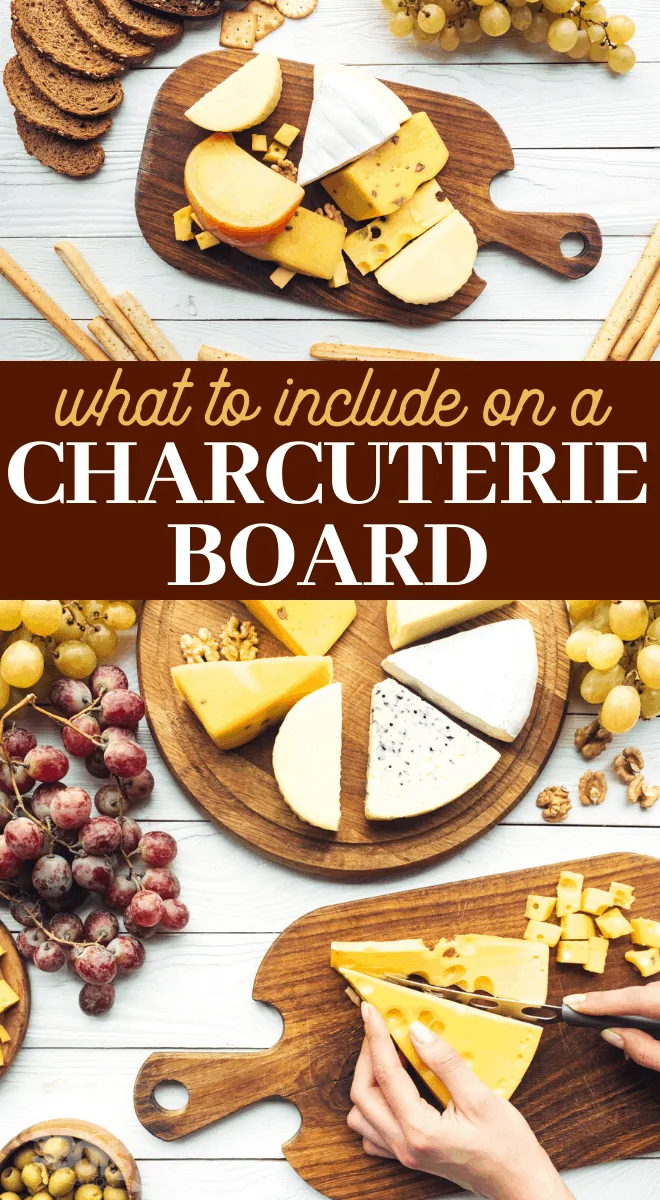
You can use a wide variety of meats and cheese or keep it simple with a smaller crowd. You can provide crackers or bread, so people can assemble their own sandwiches too.
Creating your own meat and cheese platter is all a matter of personal taste, availability and budget. So go ahead and make it how you like it and enjoy.
What is a Charcuterie Board?
A charcuterie board, originating from France, is a beautifully arranged platter filled with various cured meats, cheeses, and other accompaniments that provide a delightful gastronomic experience. The term ‘charcuterie’ refers to cold, cooked or cured meats, including salami, prosciutto, and pâté, among others.
The art of charcuterie has been practiced for centuries as a way to preserve meats before the advent of refrigeration, but today, it is celebrated for its ability to bring together contrasting flavors and textures into one cohesive dish.
In constructing a charcuterie board, the meats are often the stars of the show. They are usually thinly sliced and served in a variety of ways, from rolled or folded, to fanned out on the board. Following the meats, cheeses are added to complement their flavors. These can range from firm cheeses like cheddar, to soft ones like brie, and even blue-veined varieties.
However, a charcuterie board isn’t only about meats and cheeses. It’s also about the accompaniments, which add layers of flavor and texture. Fresh and dried fruits, nuts, pickles, olives, and spreads like honey or mustard are common choices. They not only add color and vibrancy to the board but also offer palate-cleansing moments between the rich meats and cheeses.
Lastly, the bread or crackers that serve as the base for these toppings are just as important. They provide the crunch that contrasts with the soft cheeses and tender meats, rounding out the sensory experience.
A charcuterie board is more than just a dish—it’s a social event, an ice breaker, and a conversation piece. It invites guests to explore, try new combinations, and share their discoveries. Each board is unique, reflecting the personality and creativity of the one who assembled it.
A charcuterie board is a celebration of culinary diversity and a testament to the pleasures of shared dining experiences.
Great Tips To Turn a Cheese and Meat Tray into a Gourmet Charcuterie Board
Plan to serve everything room temperature, so give yourself some time to get the meats thinly sliced and allow your meat and cheese tray to rest for a bit before you put it out.
But, let’s be clear, there’s an answer to ‘how far in advance can i make a meat and cheese tray’–not too long. You don’t want to cheese to go so soft that it is inedible. And you don’t want any of your soft cheeses to be melty. So, the answer is: about a half hour–assuming you will have
To cut the meat and cheese thinly, you should use a cheese slicer like this one I found on Amazon. It’s going to allow you to adjust the width of the cut and cleanly slice cured meats and cheeses quite nicely.
Three things you have to think about when preparing a charcuterie board:
- smell
- taste
- presentation.
You want everything to pair well in all three of these ways. If you’re concerned about that and not sure, keep reading, because there’s a trick to doing this.
Indeed, when preparing a charcuterie board, the elements of smell, taste, and presentation are crucial. Let’s delve into each:
Smell
The aroma of a charcuterie board is an essential part of the experience. The selection of cheeses can significantly impact the overall scent of your board.
For instance, blue cheese has a strong, pungent aroma, while brie is more subtle and creamy.
Similarly, cured meats like salami or prosciutto bring their own distinctive scents.
Fresh herbs, fruits, and pickles also add to the aromatic profile, creating an inviting bouquet that tempts the senses even before the first bite.
Taste
Taste is arguably the most critical aspect of a charcuterie board. It’s essential to offer a variety of flavors to cater to different palates.
This includes a mix of salty (cured meats, hard cheeses), sweet (fruits, jams, dark chocolate), sour (pickles, olives), and bitter (dark chocolate, different kinds of cheeses).
The combination of these tastes creates a well-rounded flavor profile that keeps guests reaching for more.
Presentation
The presentation is really the star of a charcuterie board. Aesthetics play a significant role in taking a meat cheese platter from a Lunchable to an impressive party tray!
The way you arrange the components can truly turn a simple spread into a work of art.
Use a variety of colors, shapes, and sizes to make the board visually appealing. For example, fold salami into rosettes, cut cheese into different shapes, and arrange fruits and nuts in clusters. Garnishes like fresh herbs or edible flowers can add a final touch of elegance.
Creating a successful charcuterie board involves a delicate balance of smell, taste, and presentation.
By considering all these aspects, you can create a sensory experience that delights your guests this holiday season and makes future birthday parties memorable.
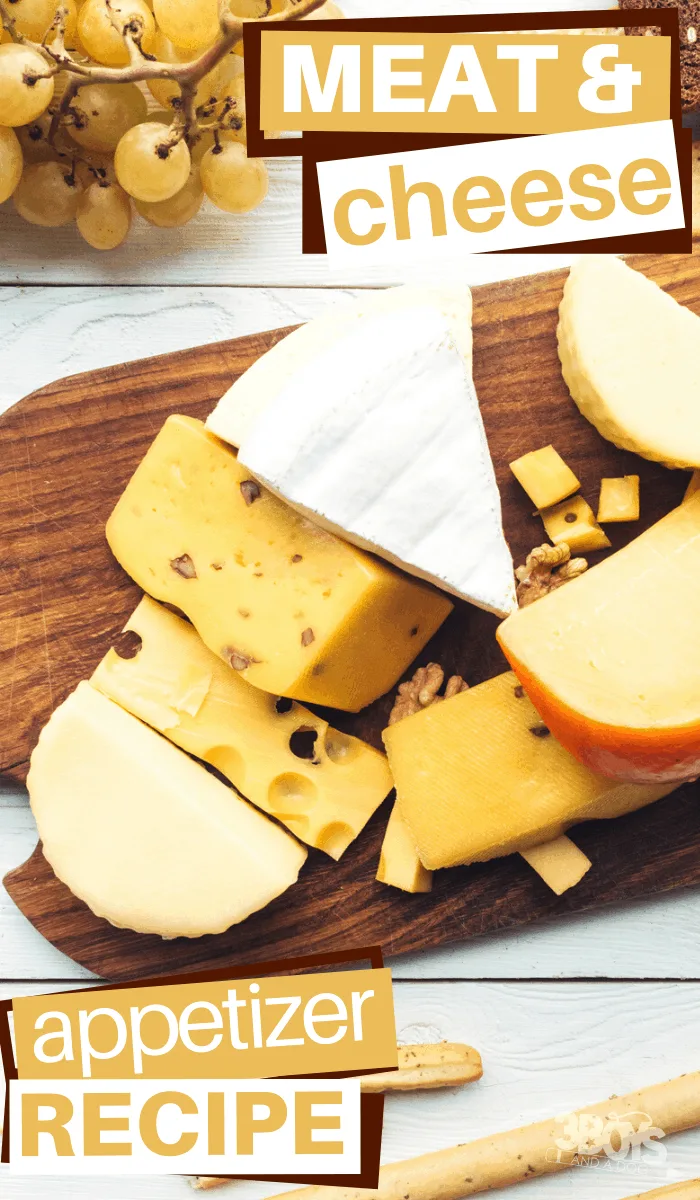
What Kind of Meat Goes on a Charcuterie Board?
When you’re crafting a meat platter, also known as a charcuterie board, cured meats are often the main ingredient. These can range from Italian meats like prosciutto and salami to classic meats like roast turkey or black forest ham.
Including a variety of textures and flavors is a great way to cater to all tastes and make your platter more appealing.
One meat that pairs well with a variety of others and is often a crowd-pleaser is salami. Salami comes in various forms, such as Genoa Salami and Sopressata, and is a classic choice for many charcuterie enthusiasts due to its rich, savory flavor.
Another favorite is prosciutto, an Italian cured ham that is thinly sliced and has a delicate, melt-in-your-mouth quality. It’s a versatile option that pairs beautifully with both mild and strong-flavored cheeses.
Summer sausage is another excellent option. This American semi-dry fermented sausage is traditionally sliced thick and provides a hearty, flavorful addition to any charcuterie board. My husband thinks the variety of meats is the best part of a grazing board!
For those seeking something a bit more unique, consider adding ‘Nduja, a spreadable pork salumi from Italy, or Rillettes, a preparation of meat similar to pâté.
Don’t forget to consider Spanish meats as well, such as Chorizo or Jamón Ibérico. These meats bring a distinct flavor profile that can add depth and variety to your board.
Ultimately, the best advice is to choose a selection of meats that offer a range of flavors and textures.
Whether you’re using Italian meats, classic cold cuts, or harder meats, the key is to select items that complement each other and create an enjoyable eating experience for your guests. This will ensure your charcuterie board is balanced and caters to a variety of tastes.
What Kind of Cheeses are Normally on a Charcuterie Plate?
When curating a selection of cheeses for a charcuterie plate, diversity is key. You want to entice your guests with a wide array of flavors, textures, and aromas that will complement the other elements on the board.
When considering the type of cheese to include, it’s beneficial to have a mix of different milk sources like cow, goat, and sheep. Each offers a unique flavor profile, from the rich creaminess of cow’s milk cheeses to the sharp tanginess of those made from sheep’s milk.
Another aspect to consider is the age of the cheese. Aged cheeses tend to have a stronger, more pronounced flavor and a harder texture. In contrast, younger cheeses are milder and often softer. Including both on your board will cater to a range of preferences and create an interesting mix of tastes and textures.
For a robust, full-bodied flavor, hard cheeses are an excellent choice. These types of cheese, such as aged Cheddar, Gouda, or Parmigiano-Reggiano, have been matured over time, leading to their distinctive taste and firm texture. They’re perfect for those who enjoy a stronger, more pronounced cheese flavor.
Goat cheese is another fantastic addition. Known for its tangy, slightly tart profile, goat cheese can add a refreshing contrast to the rich, savory flavors of the meats and other cheeses. It’s typically soft and creamy, making it an excellent spreadable option for crackers or bread.
Creamy cheeses like Brie or Camembert bring a luxurious element to your charcuterie plate. Their decadently smooth texture and mild flavor make them a crowd favorite. They pair well with sweet accompaniments like honey or fruit preserves, offering a delightful blend of sweet and savory.
Blue cheese is for the adventurous. Its distinct sharp flavor and crumbly texture can be polarizing, but for those who appreciate its unique character, it’s a must-have. Blue cheese, such as Roquefort or Stilton, pairs exceptionally well with sweet fruits like pears or figs, creating a beautiful balance of flavors.
Cheese wedges, whether they’re from a wheel of Brie, a block of Cheddar, or a round of Gorgonzola, add a visually appealing element to your charcuterie plate.
Large wedges of cheese not only look impressive on the board but also allow guests to cut their own portions. This could be a wedge from a wheel of aged Parmesan, a hunk of sharp Cheddar, or a slice of pungent blue cheese.
They invite guests to cut off their own portion, adding an interactive component to the dining experience.
Fresh mozzarella is another excellent addition. With its delicate flavor and silky texture, it’s a crowd-pleaser that pairs well with a variety of accompaniments. Try serving it with fresh basil leaves and cherry tomatoes for a mini Caprese salad right on your charcuterie board.
Lastly, don’t shy away from trying various other cheeses or even vegan alternatives. From smoky Gouda to spicy Pepper Jack, and even dairy-free options, the world of cheese is vast and full of surprises.
The variety, type, and kind of cheese you choose can significantly enhance your charcuterie board. Incorporating creamy cheeses, large wedges, and fresh mozzarella, while leaving a few empty spots, will create an appealing and delicious spread that your guests will love.

Meat and Cheese Board Garnishes
Garnishes are what truly elevate a charcuterie board from good to exceptional. They provide the sweetness and sourness needed to balance out the rich flavors of the meats and a variety of cheeses.
Olives and pickles are classic choices that add a savory tang. Fresh fruits like grapes, apples, and figs can bring a burst of sweetness, while dried fruits like apricots and dates add a chewy texture and concentrated flavor.
A small bowl or two of nuts, such as almonds or walnuts, adds a satisfying crunch and pairs beautifully with both meats and cheeses.
Don’t forget about dips and spreads. Little bowls of honey, mustards, olive oil, and fruit preserves can add a welcome contrast of flavors.
For something unique, try garnishing with smaller items like edible flowers or fresh herbs for a final natural element.
Remember, there are no strict rules when it comes to creating a charcuterie board. Feel free to get creative and experiment with different combinations to find what suits your taste buds best.
Some of my favorite garnishes for charcuterie boards are:
- Dried Fruit
- Crumbled Blue Cheeses
- Sea Salt
- Roasted Pecans
- Dates
- Raisins
- Marcona Almonds
- Celery
- Cherry Tomatoes
- Chocolate Covered Coffee Beans (I know, but they’re so good)
What Do You Serve a Meat and Cheese Plate on?
Use these gorgeous serving platters to put together your own charcuterie board! Some of these are Amazon affiliates so you can have them delivered before the party.
- Plain Cutting Board (trust me, it’ll look fine)
- 3 Tier Rectangular Serving Platter, White
- Tiered Tray
- Metal Sheet (just make sure it’s super clean and toss some parchment paper over it)
- Sur La Table Italian Olivewood Slice Serving Board
- Kraft Paper
- Rachel Ray Dinnerware Cucina Stoneware Serving Platter, Agave Blue
What Should be on a Charcuterie Platter?
Ok. So this is crazy, but there’s kind of an art to making a charcuterie tray. The good news is that there are some really great resources out there for making some of the best appetizer boards you’re going to love and I’ve pulled together a couple of options I like to use as a base:
But, I get it, you want to get more detailed about this, but at the same time you don’t want to be told what to put on the tray, you want to know which of YOUR favorite things pair together.
Don’t worry, I’ve got that, too. Here are some of my favorite simple pairings for a charcuterie board:
- Feta cheese, little breadsticks, olives, sun dried tomatoes, walnuts and apple slices
- Havarti cheese, water crackers, dates, figs, almonds, and honey
- Mozzarella cheese, wheat crackers, grapes, walnuts, salami and prosciutto
- Cheddar, whole grain crackers, apple slices, pear slices, grapes, walnut and salami
- Brie, melba toast, crusty breads, apple slices, pear slices, almonds, prosciutto and salami
You’ll see some crossover there and you can pair most of these together for an epic charcuterie board without breaking the bank and providing some awesome snacking options.
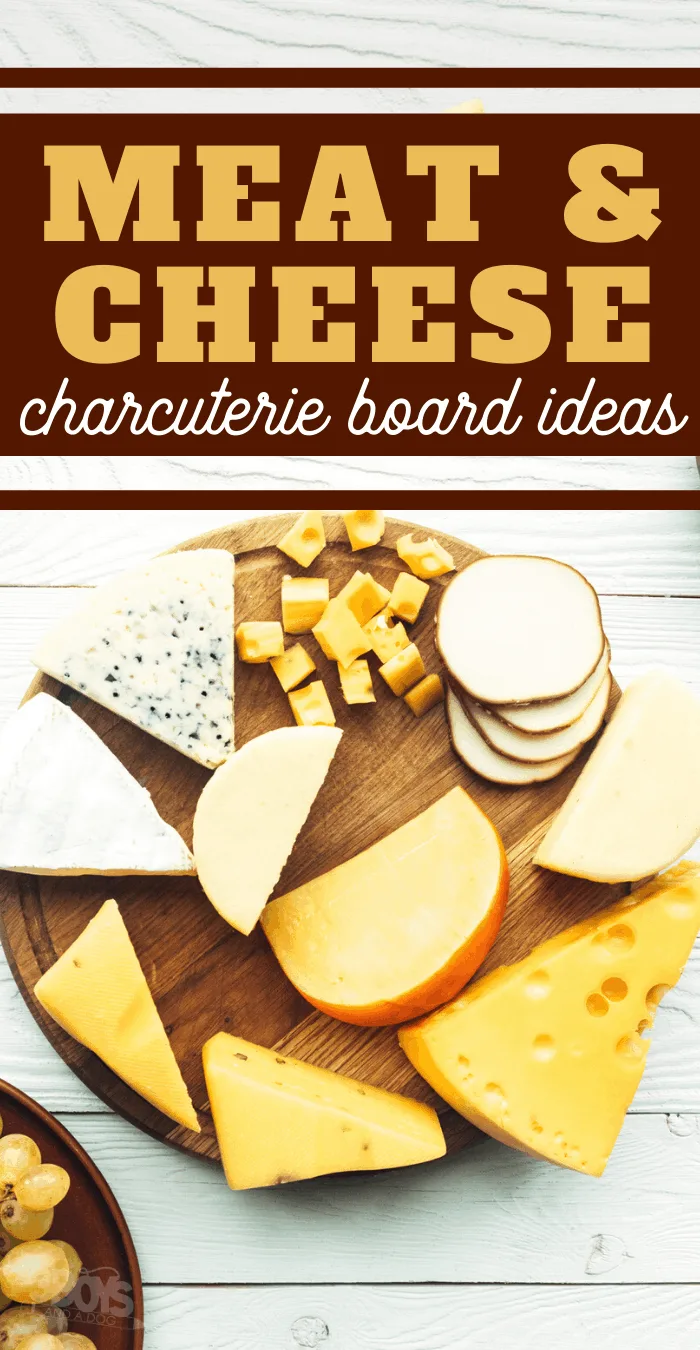
How Do You Set-up a Charcuterie Board?
A lot of the finesse about a charcuterie tray is presentation.
So, here’s my quick-and-dirty tips to make your charcuterie tray look awesome:
- Never stack anything. Spread each set of whatever (meat, cheese, crackers) out over a space or area.
- Leave spaces between each larger set of items that you fill-in with the smaller bits and garnishes.
- If you have a dip that goes along with your charcuterie board, give guests an item close-by that goes into the dip. And that goes with other items, too.
- If you have a meat that pairs well with a certain cracker or cheese, place those close-by on the board to give your guests the hint.
- Provide pops of color–don’t do everything in one area of the board in browns or yellows, then all the colorful things on the other side of the board. Mix it up!
- Don’t be afraid to leave some empty spots on your board. This doesn’t mean your board is lacking; instead, it gives the eye a place to rest and allows each item on the board to stand out. Plus, it provides space for guests to rest their picked items or to create their own delicious combinations.
Is a dessert board a charcuterie board?
While a dessert board shares many similarities with a charcuterie board in terms of presentation and purpose, it isn’t technically considered a charcuterie board. The term “charcuterie” specifically refers to an assortment of cured meats. However, the concept of beautifully arranged food items on a board for shared grazing is the same.
A dessert board typically features a variety of sweet treats like chocolates, cookies, pastries, fruits, and sometimes even cheeses. It’s designed to offer a selection of bite-sized delights for guests to pick from, much like a charcuterie board.
So while it’s not a charcuterie board in the traditional sense, it certainly follows the same idea of communal dining and food exploration.
Here are a few of our favorite dessert boards:
More Appetizer Recipes You’ll Love
If you’re making a meat and cheese charcuterie board for a crowd, you’re probably going to want some other appetizer recipes. So, I’ve pulled together some of my favorites that are definitely going to please a crowd.
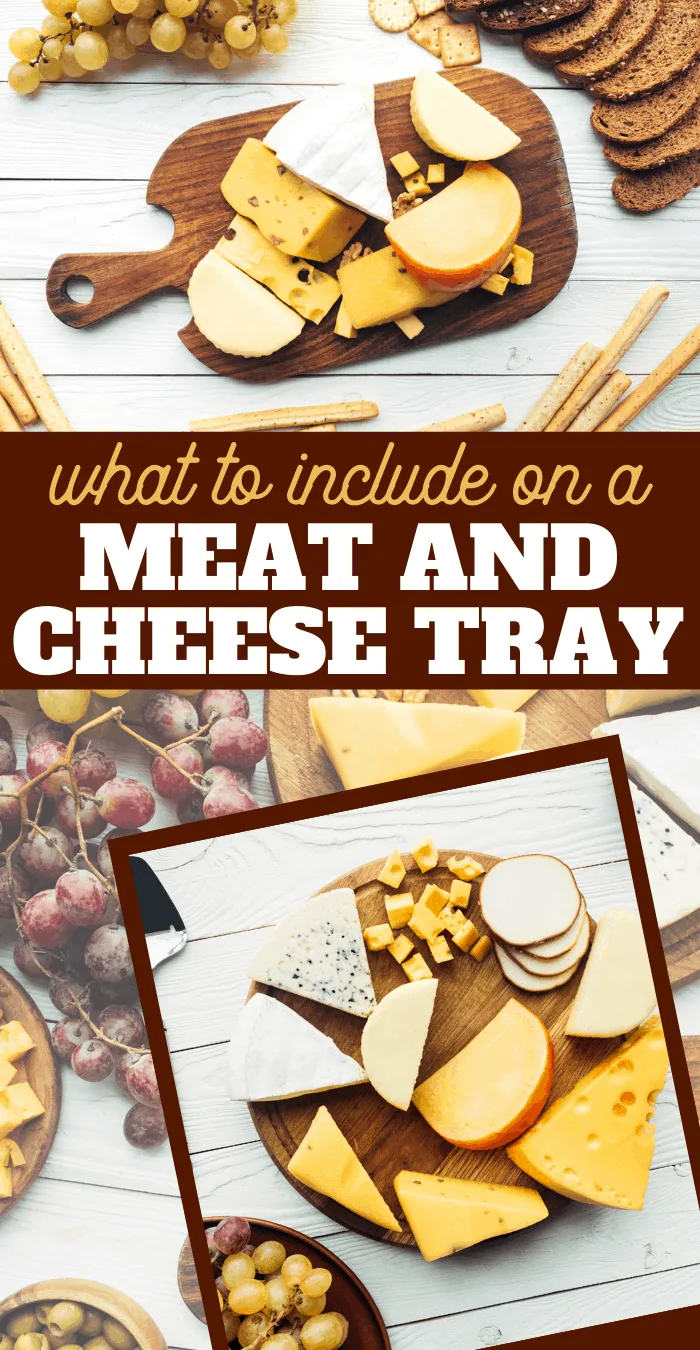
More Cheese Appetizers You’ll Love
If you’re just here for the cheese, I don’t blame you. It’s just about the best thing on the planet.
So versatile and so very tasty. You have to have more of it. All. The. Time. You’re going to need these recipes:

Meat Cheese Plate Ideas Recipe
Ingredients
Meat Ideas
- • Turkey
- • Chicken
- • Ham
- • Salami
- • Pepperoni
- • Roast beef
- • Pastrami
- • Prosciutto
Cheese Ideas
- • Cheddar
- • Havarti
- • Swiss
- • Gouda
- • Blue cheese
- • Brie
- • Cream cheese
- • Other gourmet cheeses
Accompaniments
- • Sliced veggies
- • Slice fruits
- • Bread
- • Crackers
Instructions
- Assembling Your Platter
- How you assemble your platter will depend on the meat and cheese you choose and how they’re cut. Thinly sliced meats can be rolled up and arranged on the platter. Sliced cheese can be layers from the outside of the platter to the inside. Cubed cheeses can be arranged together.
- Garnish with kale or parsley. Throw on some grapes for more visual appeal and color.
Nutrition Information:
Yield: 20 Serving Size: 1 ServingsAmount Per Serving: Calories: 110Total Fat: 7gSaturated Fat: 3gTrans Fat: 0gUnsaturated Fat: 3gCholesterol: 33mgSodium: 253mgCarbohydrates: 3gFiber: 0gSugar: 1gProtein: 9g
This data was provided and calculated by Nutritionix on 6/13/2020

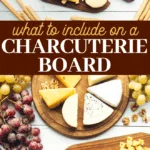
Hope @ Fairhope Supply Co.
Thursday 20th of December 2012
You had me at "cheese." Such good ideas. Thanks!
Meghan
Thursday 20th of December 2012
The grocery store upcharge for party platters is amazing, isn't it? It's so easy to make them oneself.